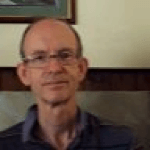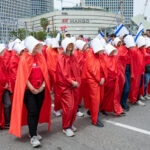An authoritarian president has been driven out, but Sri Lanka is still gripped by economic crisis and political repression. Can the mass movement bring radical change? — Editors
Sri Lanka, a small island nation of 22 million people, has suffered such a severe economic collapse that most are struggling to meet their most basic needs. Prices of essentials – food and fuels – have tripled in recent months. Getting fuel for cooking or transport means waiting in line for days on end. People have even died queueing in the hot sun.
Since March 2022, a broad popular protest movement has arisen, known as Aragalaya (Sinhala for “struggle”). The first target of this movement was to get rid of the strongman president, Gotabaya Rajapaksa. This goal was spectacularly achieved in July, after protesters occupied the president’s residence in Colombo (including, famously, his swimming pool), and several other government buildings. Rajapaksa fled the country aboard a military plane.
Repression continues unabated. Rajapaksa’s replacement as president, Ramil Wickremesinghe, has used the police and army to violently break up protest camps and arrest protesters, whom he has slandered as “fascists”. One man was threatened with arrest just for giving bottled water to protesters.
Rajapaksa’s party, the SLPP (Sri Lanka Poduyana Perumana, Sri Lanka National Front) retains a majority in parliament.
The ouster of Rajapaksa was a remarkable achievement, the first time in Sri Lanka’s 75-year history as an independent state that a president has been driven out of office by mass protests. The Rajapaksas are the latest in a series of dominant families, drawn from the class of Sinhalese rural landowners. The Rajapaksa period dates back to 2005, when Mahinda, elder brother of Gotabaya, became president. Gotabaya won the presidential election of November 2019, reinforced by the SLPP’s win in the parliamentary election of 2020. While the posts of president and prime minister were shuffled between the brothers, up to forty members of the extended family held government posts. Although their core supporters are Sinhalese-Buddhist chauvinists, the Rajapaksas were able to widen their appeal by promising stability and economic development, building a coalition that included traditional left parties and a section of the trade union movement.
Sri Lanka’s economic crash is due to a combination of internal and global factors.
The government racked up foreign debt of 51 billion U.S. dollars (USD) to finance ambitious construction projects, including a new seaport.
Big tax cuts in 2019 reduced the state’s revenue by 1.4 billion USD a year.
Tourism, an important source of income, fell off: firstly, because of the wave of terrorist bombings at Easter 2019; then the Covid-19 pandemic; it was recovering partly because of tourists from Russia and Ukraine, until Russia’s invasion of Ukraine, and international sanctions against Russia, halted such visits. Most recently, the economic disruption and the ongoing struggles have put tourists off visiting Sri Lanka.
To save foreign currency reserves, the government banned imports of chemical fertiliser in 2021. A turn to organic farming is a good thing, both for the environment and farmers’ health. However, the sudden and unplanned way it was imposed from above led to a serious crop failure and reliance on imported food.
All this was made much worse by the global rise in food and energy prices, brought about by Russia’s invasion of Ukraine and extreme weather events – droughts, heat waves, wild fires and floods – around the world. Sri Lanka was hit early and hard by these shocks running through the world system.
In mid-July, protesters put forward a list of demands, including:
- Immediate resignation of Ramil Wickremesinghe and the entire government;
- An interim government which subscribes to “the economic, social and political aims and aspirations of the people’s struggle”;
- Reduction of the executive power of the president
- A new constitution that endorses the people’s sovereignty.
To this has been added calls for an end to the repression, the release of those arrested, and charges against them to be dropped.
Some in the movement have called for a “people’s council”, which would keep a check on parliament. This could become a significant step towards direct democracy.
While these are urgent political demands, there is (apparently) much less discussion about solutions to the economic crisis, and what kind of social change is desired.
One reason for this is the great social diversity of the protests, including workers, students, farmers and middle-class professionals; disillusioned supporters of the Rajapaksa regime as well as longstanding opponents.
The country is officially named the Democratic Socialist Republic of Sri Lanka, one of the few countries in the world that still claims to be socialist. It is a partial democracy in that there are elections which result in changes of government. But there is a long history of systematic discrimination against the Tamil minority. The so-called Indian Tamils, descendants of people who came from India during the British colonial period to work as indentured labourers on the tea, rubber and coconut plantations in the central highlands, were deprived of citizenship and the right to vote in 1949, just one year after independence. There are also Lankan Tamils, whose ancestors have lived on the island since ancient times. These people retained formal citizenship rights, but are discriminated against and oppressed in other ways.
The traditional left parties have been largely complicit in Sinhalese supremacy and anti-Tamil discrimination.
Sri Lanka’s civil war, between the government and the Liberation Tigers of Tamil Eelam (LTTE), dragged on for 26 years, from 1983 to 2009. Gotabaya Rajapaksa, who was minister of defence in the later phase of this conflict, is accused of war crimes and violations of human rights. (The LTTE also imposed a brutal regime in the areas under its control.)
The word “Socialist” in the country’s title was at best an aspiration, at worst an ideological mask, and is today largely ignored (perhaps because removing it would stir up a debate about socialism?) Though, remarkably, Sri Lanka does have free health care and free education, up to and including university.
Reports that the current protests have brought about a degree of unity between Sinhalese and Tamils, Buddhists, Hindus and Muslims, are encouraging – up to a point. The danger is that such tentative unity may fall apart, if the movement stalls.
So far, the movement does not appear to have raised an explicit demand for full civil rights for Tamils and other minorities, and legal protection against discrimination. To do so is vitally important.






0 Comments